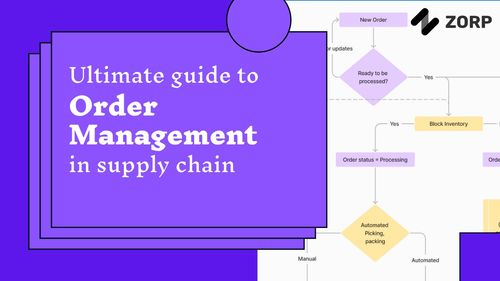Mastering inventory audit procedures is essential for organizations that hold significant amounts of inventory. An effective inventory audit ensures that a company's financial statements accurately reflect the value of its inventory, leading to better decision-making and improved operational efficiency. In this article, we will discuss the importance of inventory audits, the different types of audits, and a step-by-step guide to conducting a successful audit. We will also provide some tips for making your inventory audit process more efficient and effective.
Inventory audits play a crucial role in maintaining the financial health of a company. They serve several important purposes:
Inventory is often one of the largest assets on a company's balance sheet. Regular audits ensure that the reported value of inventory is accurate, allowing for more precise financial planning and decision-making. According to a study by the Association of Certified Fraud Examiners, inventory fraud accounts for an estimated $6 billion in annual losses for U.S. businesses. Regular audits help prevent such losses.
Audits can uncover errors in record-keeping, inventory management, and internal controls. Early detection of such errors allows companies to implement corrective measures and minimize potential losses.
Inventory audits help companies meet regulatory requirements and industry standards, such as the Generally Accepted Accounting Principles (GAAP) and the International Financial Reporting Standards (IFRS).
There are two main types of inventory audits:
Periodic audits are conducted at specific intervals, such as quarterly or annually. These audits typically involve a full physical count of inventory and a comprehensive review of inventory records.
Perpetual audits involve continuous monitoring and reconciliation of inventory records with physical counts. This type of audit is often facilitated by modern inventory management systems that automatically update inventory records in real-time.
Follow these steps to conduct an effective inventory audit:
Determine the specific goals of your inventory audit, such as ensuring accurate financial reporting, detecting errors, or complying with regulations.
Select a team of qualified individuals with expertise in inventory management, accounting, and auditing.
Create a comprehensive plan that outlines the scope, objectives, timeline, and resources required for the audit. Include a list of all inventory locations, procedures for conducting physical counts, and methods for reconciling inventory records.
Perform a physical count of all inventory items at each location. Use a systematic approach, such as counting items in a specific order or using barcode scanners, to ensure accuracy and efficiency. Make sure to account for items in transit or on consignment.
Compare the results of the physical count with the inventory records in your accounting system. Identify any discrepancies between the two sets of data, such as missing items, incorrect quantities, or misclassified inventory.
Analyze the discrepancies discovered in the previous step to determine their root causes. Possible explanations for discrepancies include clerical errors, theft, spoilage, or obsolete inventory. Conduct a thorough investigation to identify and document the reasons for each discrepancy.
Prepare a detailed report summarizing the findings of the audit, including any discrepancies, root causes, and recommendations for corrective actions. Share the report with relevant stakeholders, such as senior management and external auditors. Implement the recommended corrective actions to address the identified issues and improve the overall inventory management process.
Curious about supplier audits? Dive into our latest article to explore a detailed step-by-step process: Supplier Audit Guide. Uncover
Mastering inventory audit procedures is essential for maintaining accurate financial reporting, detecting errors and fraud, and ensuring compliance with industry standards and regulations. By following the step-by-step guide outlined in this article and incorporating the tips provided, your organization can conduct effective inventory audits that lead to improved operational efficiency and better decision-making.

Create your custom audit application using the ZORP templates below


